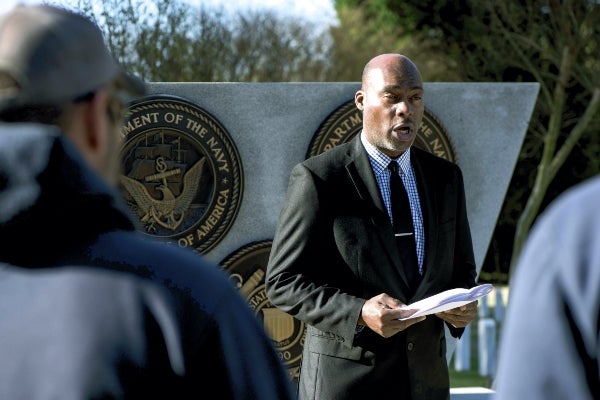‘The Great War’ remembered: The U.S entered World War I a century ago
Published 12:17 pm Thursday, April 6, 2017
By Mark Wineka
mark.wineka@salisburypost.com
SALISBURY — The scene was symbolic for the day. The wind was blowing hard, like the winds of war did 100 years earlier.
The crowd around the wreath was small, reflective of how “The Great War” has been pushed back in the country’s collective memory because all its warriors have passed away.
Still, many of those World War I veterans were here in spirit, their graves under the rows and rows of white markers planted in the hills of Salisbury Historic National Cemetery.
“Our national cemeteries are not just final resting places for the deceased, they are memorials for us all, unlike any other in the nation,” said O’Neal Cunningham, acting cemetery director in Salisbury.
Cunningham spoke Thursday morning at a brief, flowered-wreath ceremony in the original Salisbury National Cemetery off Railroad Street. Active burials of military veterans are now conducted in the other Salisbury National Cemetery site next to the Hefner VA Medical Center campus.
Only cemetery staff members attended the morning ceremony, marking the centennial anniversary of the United States’ entry into World War I on April 6, 1917. This and other ceremonies across the country also honored the 353,082 World War I veterans buried in national cemeteries.
Cunningham said Salisbury National Cemetery and all others can be used as “a virtual classroom” to educate future generations on the humble idea that “the price of freedom is visible here.”
“As long as these walls stand,” Cunningham said, “let the Salisbury Historic National Cemetery provide the endless teaching moments for us all — especially our youth — to learn, understand and appreciate the weight of sacrifice to something that is greater than oneself.”
Even though the U.S. involvement was limited to 20 months, World War I proved to be costly. More than 100,000 American lives were lost.
When the war ended, some 4 million U.S. “doughboys” had served in the American Expeditionary Force, and more than half of those men had fought overseas.
By war’s end, roughly 25 percent of the U.S. male population between ages 18 and 31 were in military service.
On April 2, 1917, President Woodrow Wilson asked Congress to declare war on the German empire after attacks on American ships and commercial ships transporting American passengers.
On April 6, 1917, Congress declared war, and the United States entered the fighting on the side of England and France. It was a time when the United States had a small army, leading to the passage of the Selective Service Act and the drafting of millions of American men.
By the summer of 1918, the United States was sending 10,000 soldiers a day to France.
Famous men and units such as the Fighting 69th and the Harlem Hellfighters emerged during the war, Cunningham said. Sgt. Alvin York of Tennessee led an attack on a German machine gun nest, which silenced 35 machine guns and captured 132 enemy soldiers.
William J. Donovan was the only American to have received the nation’s four highest medals of valor. He later went on to found — in World War II — the Office of Strategic Services, the precursor to today’s Central Intelligence Agency.
Gen. John J. Pershing commanded the AEF, and U.S. soldiers came to know places in Europe such as Bellea-Wood, Chateau-Thierry, Cantigny and the Meuse-Argonne.
The widely held belief that World War I was “the war to end all wars” was obliterated, of course, by the wars to come.
The last American World War I veteran, Frank Buckles Jr., died at the age of 110 six years ago.
Cunningham said names from that generation are now etched in stone or marble and the men are buried in private cemeteries or in VA national cemeteries, state veterans cemeteries or overseas cemeteries managed by the American Battle Monuments Commission.
“Ultimately,” Cunningham said, “our time on this earth will come to an end.
“But how we memorialize our veterans will not.”
Contact Mark Wineka at 704-797-4263.







